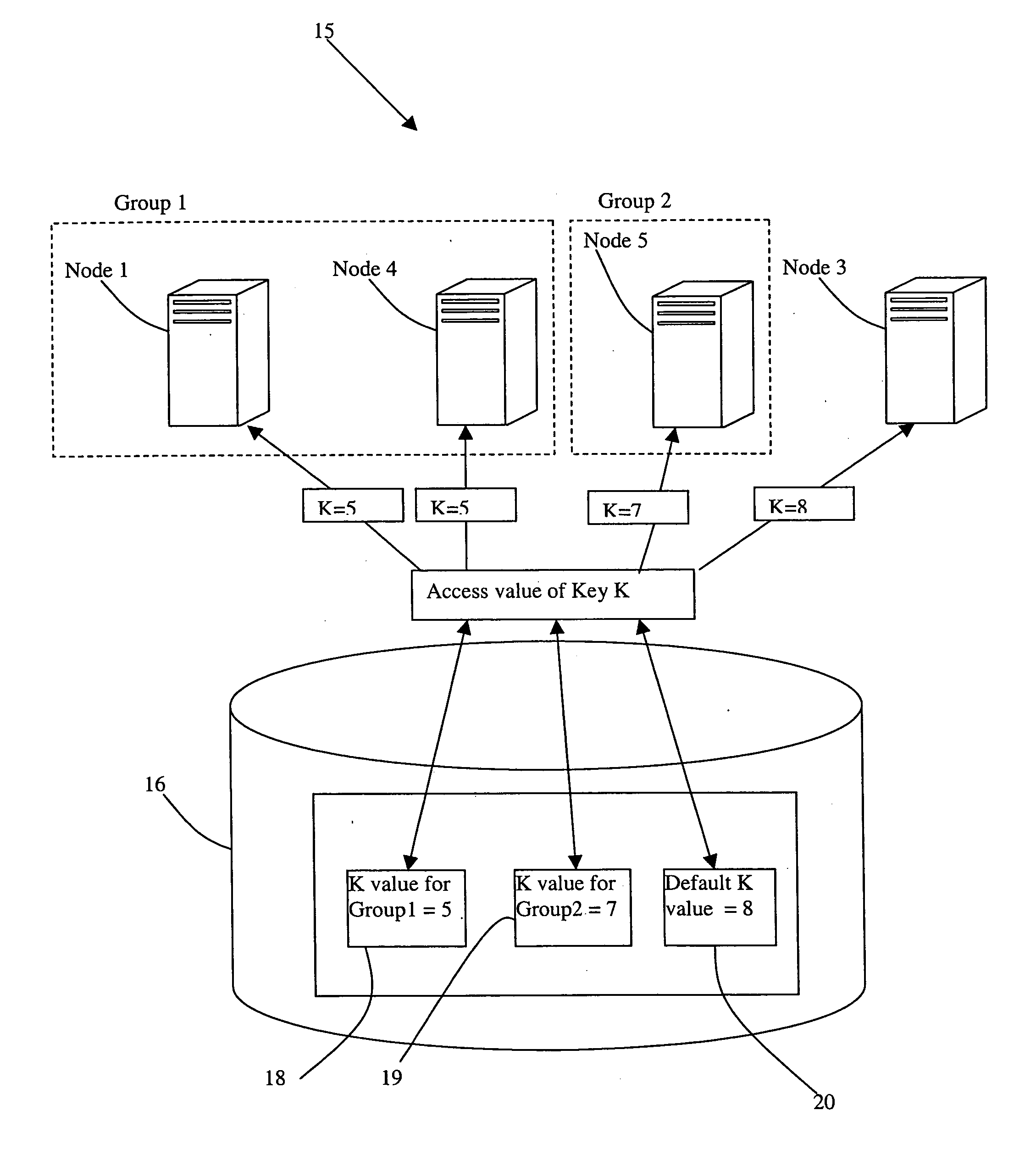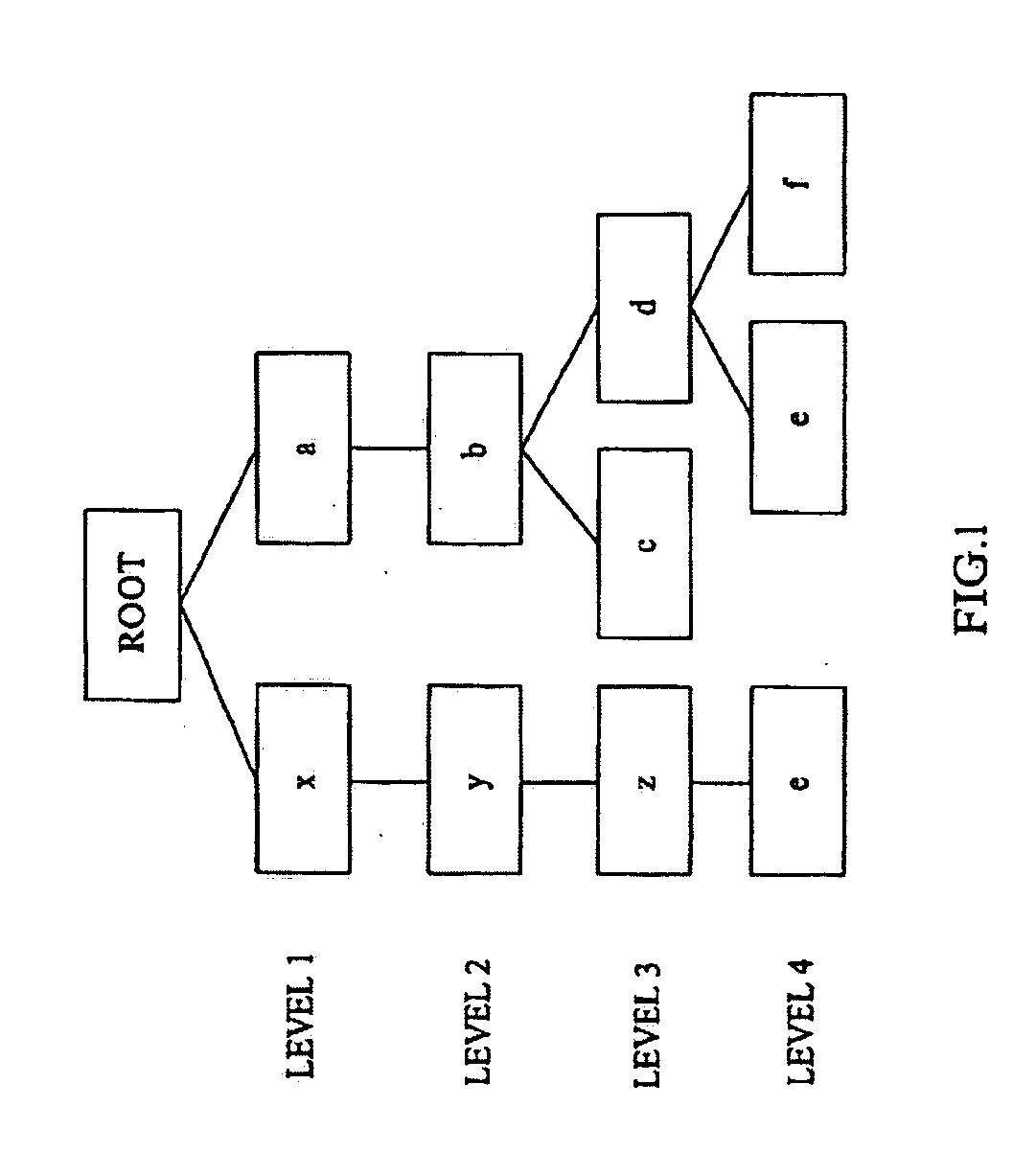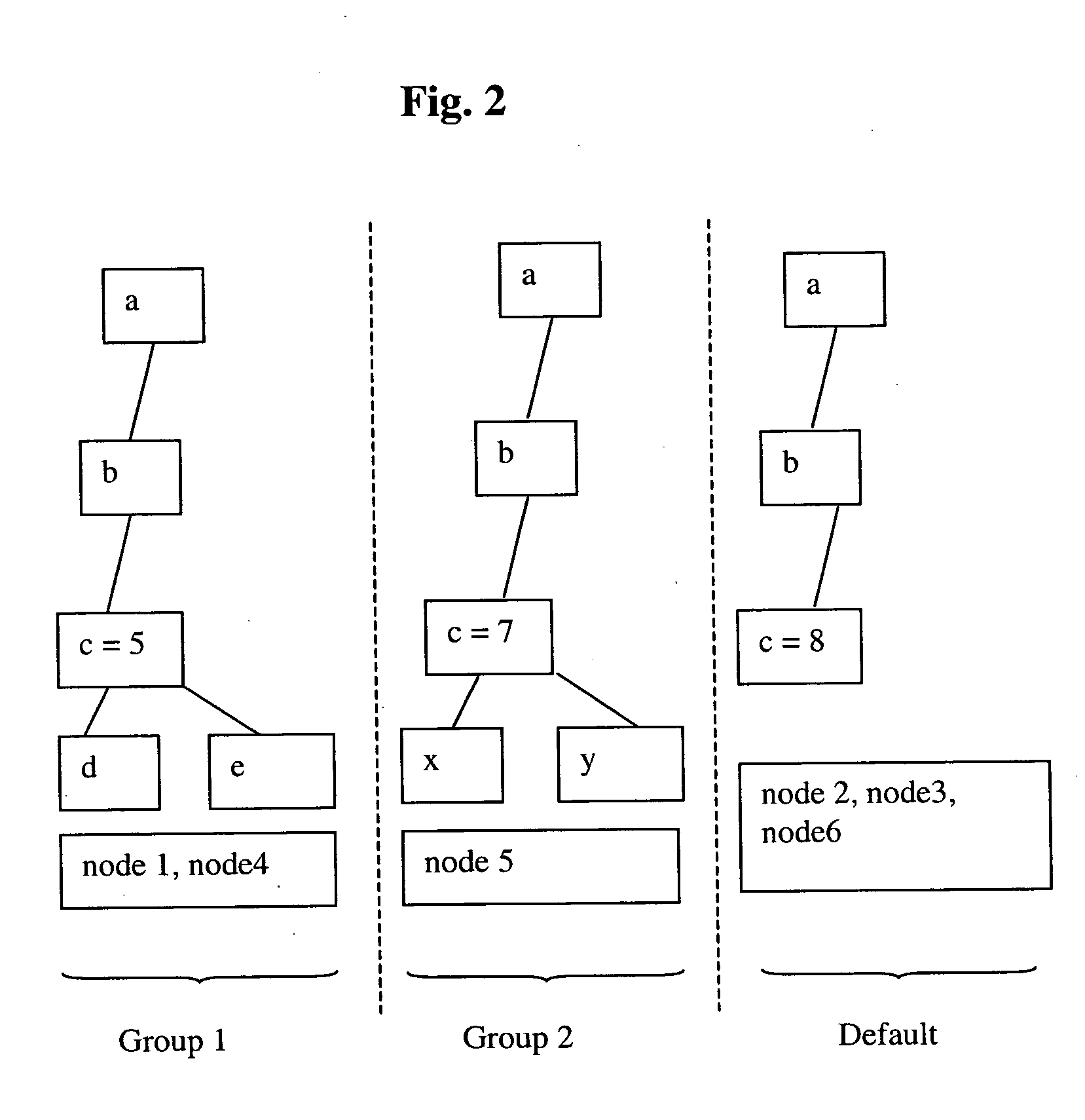Method and mechanism for managing and accessing static and dynamic data
a static and dynamic data and management method technology, applied in the field of methods and mechanisms for managing and accessing static and dynamic data, can solve problems such as data conflicts, affecting registries, and reading incorrect values
- Summary
- Abstract
- Description
- Claims
- Application Information
AI Technical Summary
Benefits of technology
Problems solved by technology
Method used
Image
Examples
example 1
[0090] The first example involves three groups (Group 1, Group 2, and Group 3), and parallels the example configuration shown in FIG. 5G:
[0091] Group1 a.b.c[V1]--Key name is a.b.c and the value of this key is V1
[0092] Group 2 a.b.c[V1+8]--Key name is a.b.c and the value of this key is V1+8
[0093] Group 3 a.b.c[V1+4]--Key name is a.b.c and the value of this key is V1+4
[0094] The following DTF describes the transformation functions between different groups for this key-value:
[0095] [(Group1a.b.c_value, transform1_Group1_Group2( ))
[0096] (Group3a.b.c_value, transform2_Group3_Group2( ))
[0097] (Group3a.b.c_value, transform3_Group3_Group1( ))]
[0098] The `_value` signifies that the transformation is to be applied on the value of the key. Keys have values and other attributes (properties) like security attributes etc. Our claim can be extended to include any number of attributes keys may have in some implementation.
example 2
[0099] The second example involves two groups in which the transformation is affected by the hierarchical nature of one or more of the data elements / structures:
[0100] Group1 a.b.c[V1] a.b.d[V2]
[0101] Group2 a.b.f[V1+V2]
[0102] [(Group1a.b.f_value, transform1_Group1_Group2( ))]
[0103] In this example, `*` is a syntactic element of the language describing the GDKs. Mention of a.b.* in the above DTF signifies that the transformation is applied on all the children of key a.b.
example 3
[0104] The third example shows an approach that addresses the situation when the different groups are associated with shared data having different hierarchical structures.
[0105] Group1 a.b.c a.b.d
[0106] Group 2 a.b.c
[0107] [(Group1NULL, transform1_Group1_Group2( ))]
[0108] In this example, the key a.b.d does not exist for Group2.
PUM
 Login to View More
Login to View More Abstract
Description
Claims
Application Information
 Login to View More
Login to View More - R&D
- Intellectual Property
- Life Sciences
- Materials
- Tech Scout
- Unparalleled Data Quality
- Higher Quality Content
- 60% Fewer Hallucinations
Browse by: Latest US Patents, China's latest patents, Technical Efficacy Thesaurus, Application Domain, Technology Topic, Popular Technical Reports.
© 2025 PatSnap. All rights reserved.Legal|Privacy policy|Modern Slavery Act Transparency Statement|Sitemap|About US| Contact US: help@patsnap.com



